Key takeaways:
- Storyboarding serves as a visual roadmap that enhances narrative flow, emotional tone, and team collaboration in film production.
- Utilizing techniques like thumbnails, notes, and flexibility in revisions can greatly improve the storyboarding process.
- Both traditional and digital tools offer unique advantages; a blend of methods can enhance creativity and facilitate collaboration.
- Embracing simplicity, feedback, and personal perspective enriches storytelling and allows the core narrative to shine through.
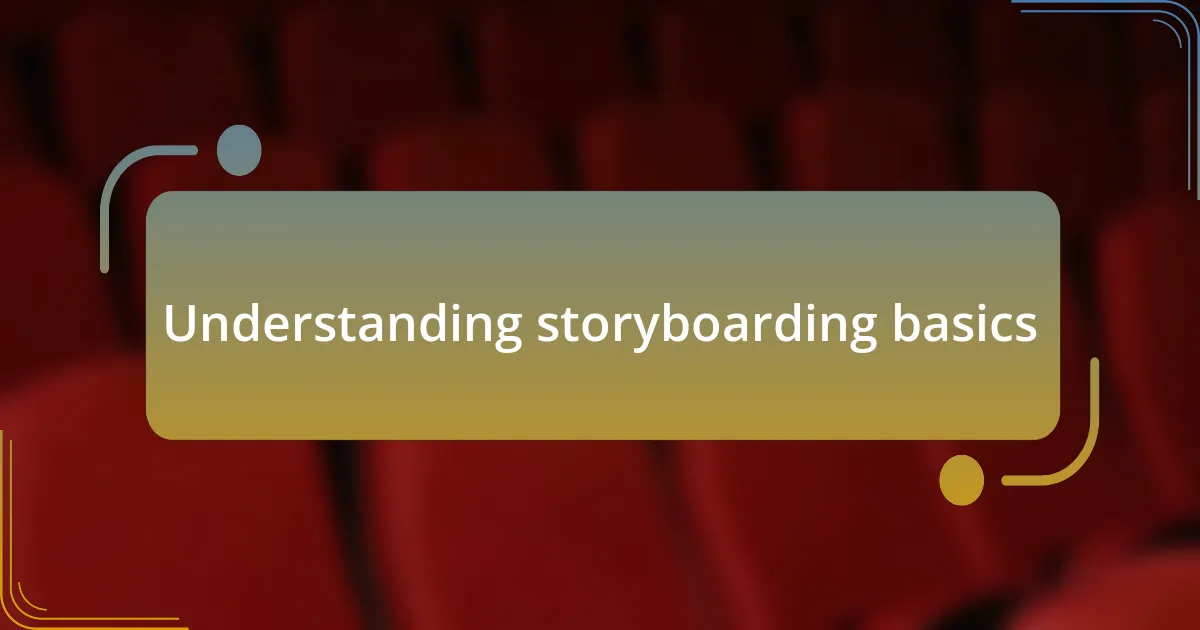
Understanding storyboarding basics
Storyboarding is like creating a visual blueprint for a film. When I first tried storyboarding, I felt a mix of excitement and overwhelm. How do you translate an entire screenplay into a series of images? I quickly learned that every frame tells a part of the story, guiding the viewer through the narrative arc.
It’s fascinating to see how each scene emerges through the storyboard. I remember spending hours sketching one pivotal moment, realizing that even minor details—like a character’s expression—could significantly impact the audience’s connection to the story. Have you ever thought about how much emotion a simple frame can convey? That realization made me appreciate the power of visuals in storytelling.
As I delved deeper, I began to understand the importance of sequencing. I often ask myself, how does this shot relate to the next? By mapping out transitions and actions, I found that the storyboard became not just a tool but a creative process in itself. Each panel was an invitation to explore choices and possibilities, shaping the final narrative I wanted to share.
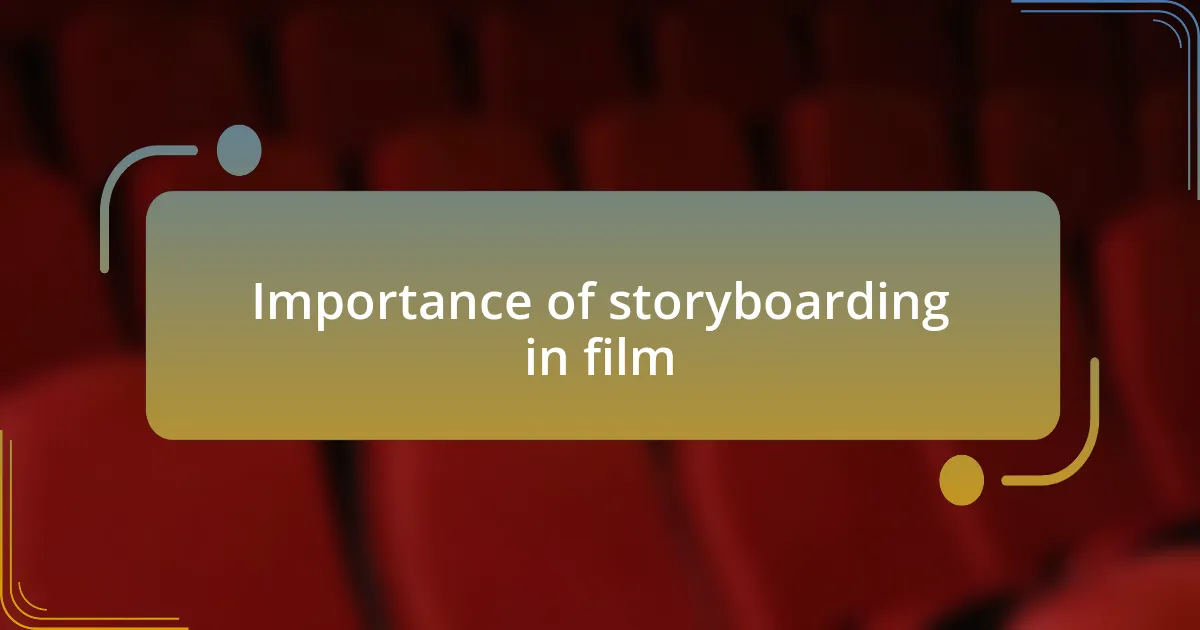
Importance of storyboarding in film
The importance of storyboarding in film cannot be overstated. I recall my first major project where I neglected the storyboard phase. It turned into a chaotic mess; scenes felt disjointed, and the pacing suffered. This experience taught me that storyboarding provides a clear visual roadmap, guiding each part of the film to ensure a cohesive flow and tone that resonates with the audience.
Moreover, storyboarding allows for exploration before the actual filming begins. When I storyboarded a short film centered around a family reunion, I found an image of a sunset that captured the essence of nostalgia I wanted to convey. That single frame prompted conversations about lighting and atmosphere that shaped the entire filming process. Have you ever realized how a well-planned storyboard can inspire creative discussions among the team?
Lastly, I believe that storyboarding serves a practical function, particularly when collaborating with a crew. On a recent set, I shared my storyboard with the cinematographer, who instantly grasped the visual language I intended to create. This alignment streamlined communication and fostered a collaborative spirit, ultimately enhancing the film’s overall vision. Isn’t it incredible how that simple act of mapping out visuals can unify a team with a shared goal?
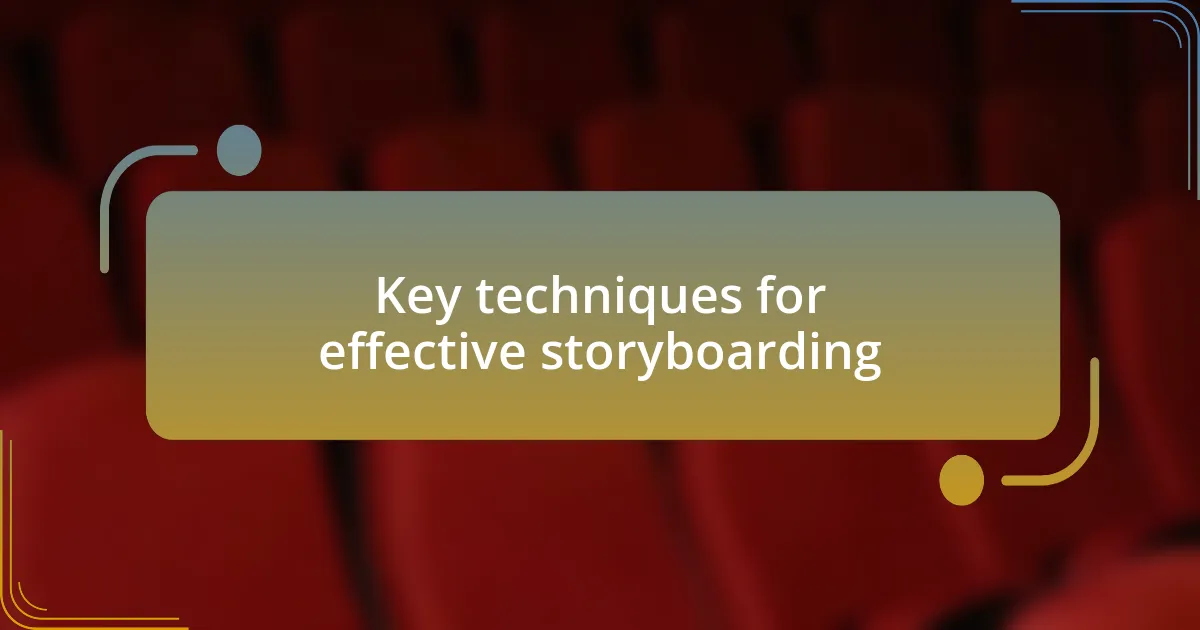
Key techniques for effective storyboarding
One technique that has transformed my approach to storyboarding is using thumbnails. In my early projects, I often jumped straight into detailed sketches, but I soon discovered that these quick, rough doodles allowed me to experiment with ideas without committing to anything. As I filled pages with tiny squares, I felt a sense of freedom; it was exhilarating to visualize different angles and compositions. Have you ever felt that rush of creativity when you realize that anything is possible on paper?
Another key technique I find invaluable is incorporating notes alongside the illustrations. Whenever I sketch out a scene, I jot down thoughts about character emotions, lighting, and dialogue. This practice not only enriches my storyboard but acts as a recipe for the emotional tone I wish to convey. In one instance, during the planning of a dramatic confrontation scene, my notes guided the actors in their performances, making everything more authentic. Isn’t it fascinating how a few words can enhance visual storytelling significantly?
I can’t emphasize enough the importance of revisiting and revising your storyboard. Initially, I was hesitant to change my work after spending hours crafting it, but I’ve learned that flexibility is key. On a recent project, I completely overhauled my storyboard after receiving feedback during a pre-production meeting. While it was challenging to let go of my original vision, the end result was a stronger narrative flow that better engaged the audience. Have you experienced a moment where letting go led to something greater? Sometimes, the best ideas emerge when we embrace change rather than shy away from it.
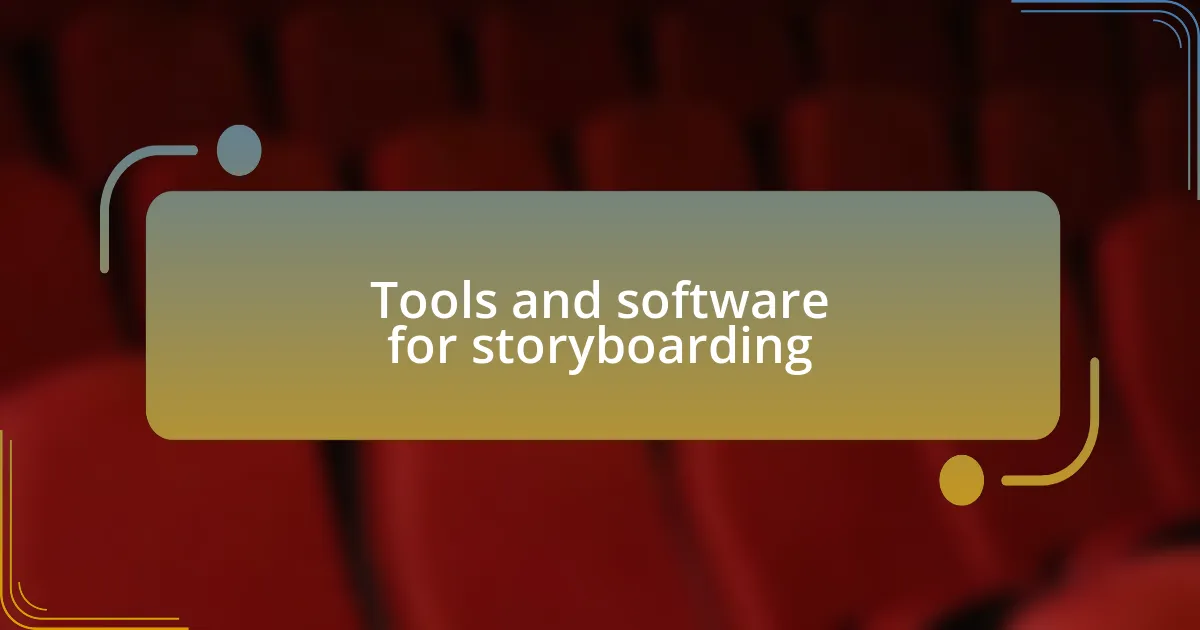
Tools and software for storyboarding
When it comes to tools for storyboarding, I’ve found that both digital and traditional methods have their own strengths. I remember initially using pencil and paper, which felt organic and allowed me to connect with my creativity. However, once I started exploring software like Storyboard Pro, the efficiency of rearranging scenes with a simple click was a game changer. Have you ever experienced that moment when technology enhances your creativity rather than stifles it?
Digital tools are incredibly versatile, and I’ve noted that programs like Adobe Photoshop and Clip Studio Paint offer advanced features like layering and custom brushes that can elevate my boards to another level. What I particularly love is the ability to create animations directly from my storyboards, allowing me to visualize movement and pacing. Have you tried mixing traditional sketching with digital enhancements? It’s fascinating how combining methods can open up a whole new realm of creativity.
I also recommend exploring web-based platforms like Boords and Storyboard Fountain, which allow for collaborative storyboarding. In one of my group projects, using these tools enabled real-time feedback, letting us brainstorm ideas dynamically. It was refreshing, almost like a group therapy session for filmmakers—everyone’s voices and thoughts were appreciated. Isn’t it inspiring how technology can bring people together to refine and elevate a story?
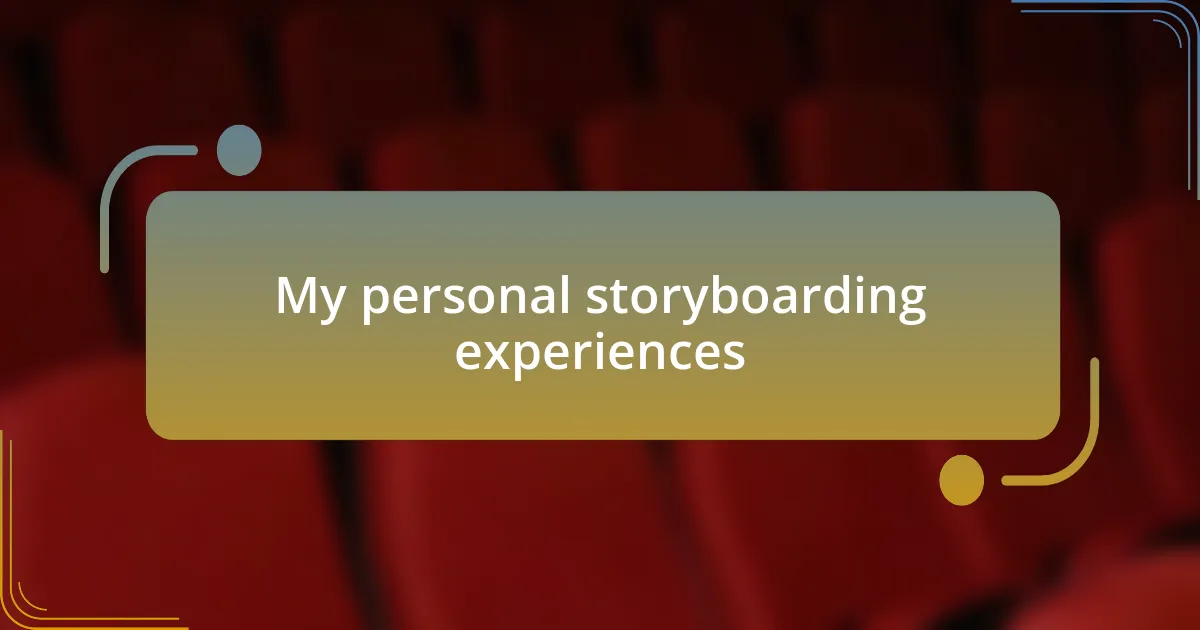
My personal storyboarding experiences
My personal journey in storyboarding began with a simple sketchbook tucked away in my attic. I remember sitting there for hours, pouring over ideas while trying to capture the essence of my favorite films. It felt like I was translating the magic of cinema into my own narrative language, which ignited a profound joy in me. Have you ever felt that thrill when an idea begins to take shape on paper?
As I transitioned to digital storyboarding, my experience deepened significantly. The first time I experimented with Storyboard Pro, I was blown away by how swiftly I could visualize a scene. I still recall that moment when I saw my rough sketches come alive, complete with movement and rhythm. It was like discovering a new way to dream—suddenly, I could bring my thoughts to life in ways I’d never imagined possible. Doesn’t it feel empowering when technology aligns with our creative instincts?
Collaborating with a fellow filmmaker on a project opened my eyes to the power of shared ideas during the storyboarding process. We spent countless late nights brainstorming, and it led to us crafting a storyboard that was richer than I could have produced alone. I could feel the energy bouncing between us as we built on each other’s concepts. Can you remember a time when teamwork elevated your vision to new heights? For me, that experience cemented the belief that storytelling is truly a collective journey.
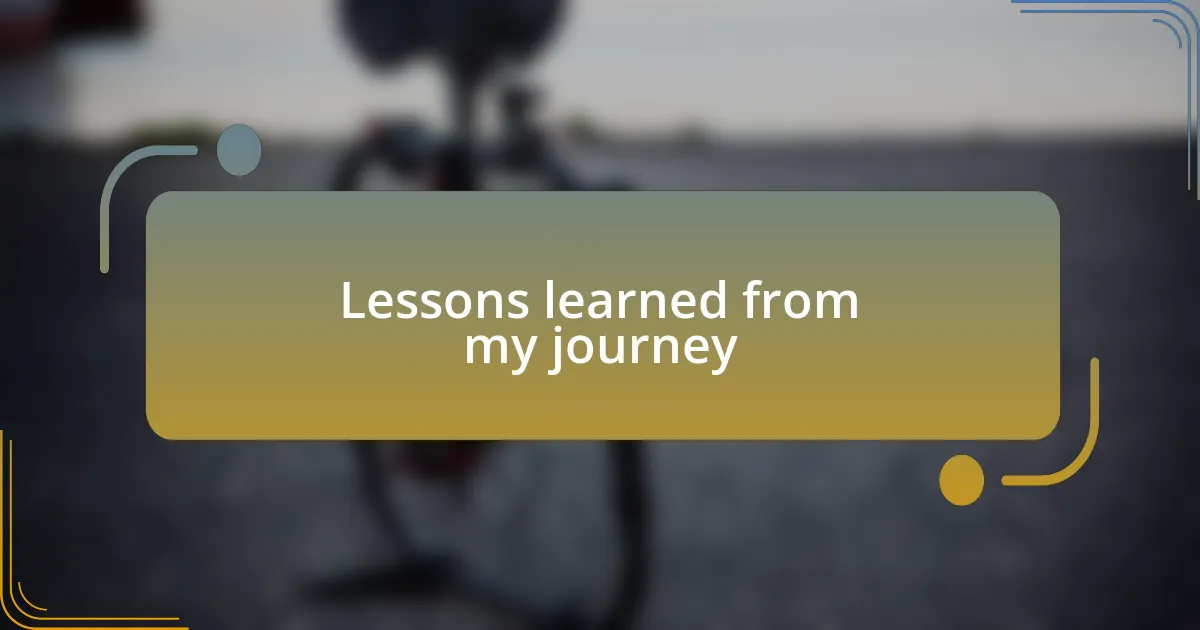
Lessons learned from my journey
One important lesson I learned is the value of simplicity in storytelling. Early in my journey, I often overloaded my storyboards with too much detail, thinking this would elevate my ideas. However, I soon realized that stripping away the excess allowed the core narrative to shine through. It raises an intriguing question: How often do we complicate our visions when all they need is clarity?
Another eye-opening realization came when I embraced the importance of feedback. I vividly remember sharing a rough draft with a mentor, only to uncover flaws I’d been too close to see. Their constructive criticism wasn’t easy to hear, yet it was invaluable. It made me ponder, doesn’t the act of sharing our work make it stronger?
Lastly, I learned that every storyboard is ultimately a reflection of our unique perspective. I used to doubt my voice among more experienced peers, but I found that my individual experiences enriched my work. This brings to mind the vital notion that what you create is inherently valuable simply because it’s yours. Isn’t it fascinating how our personal journeys shape our storytelling?
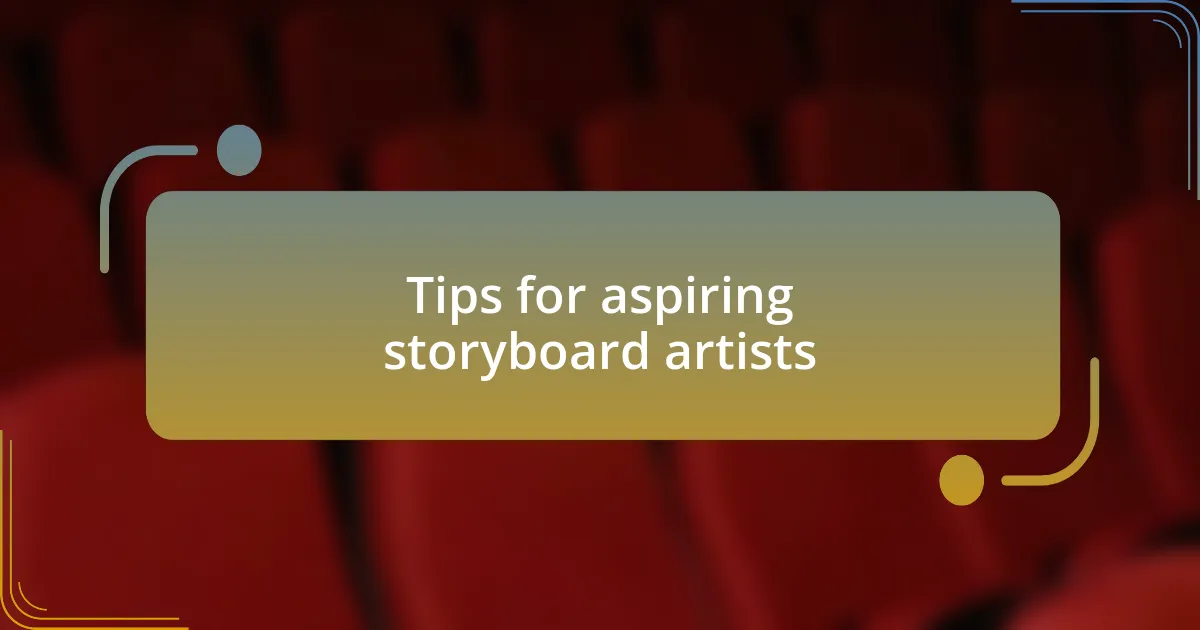
Tips for aspiring storyboard artists
One key tip for aspiring storyboard artists is to master the art of visualization. I remember sitting in my room, practicing how to frame a scene, imagining it as if it were a movie. This mental exercise helped me convey emotions and actions that words alone couldn’t capture. Have you ever tried sketching without overthinking? Sometimes, the best ideas flow when you let your hand move freely.
Another vital piece of advice is to study different styles of storyboarding. During my journey, I found inspiration in everything from animated shorts to live-action films. Watching how different artists approached their narratives opened my eyes to new techniques and perspectives. It made me wonder, what unique touches could you bring to your own storyboards by exploring diverse sources?
Finally, don’t shy away from collaboration. There was a project where I teamed up with a writer and a director, and it transformed my view on the storyboard process. Sharing ideas and hearing others’ insights showed me how teamwork can elevate your work to new heights. How often do you collaborate with others in your creative ventures? Each partnership can offer fresh insights and push you to grow as an artist.